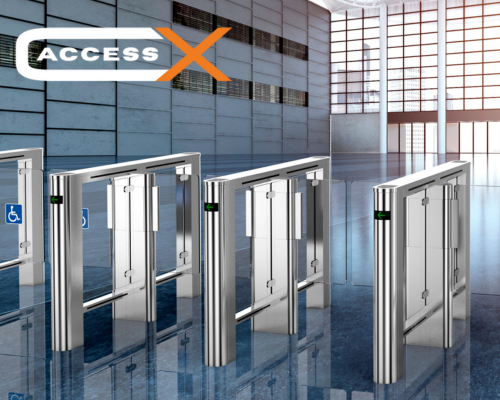Access control turnstiles are a fascinating blend of history, technology, and security. These devices, which we often encounter in everyday settings like subways, stadiums, and office buildings, have an intriguing past and play a crucial role in modern society. This blog delves into the history of turnstiles, their evolution, and their various applications today.
The Historical Roots of Turnstiles
The concept of the turnstile dates back centuries, originally emerging as simple barriers in agriculture. Early turnstiles were wooden structures used to control the flow of livestock, ensuring animals could move in a single direction while keeping them from wandering off the desired path. These rudimentary devices were effective in managing movements and maintaining order within farmlands.
As time progressed, the idea of controlling human movement with turnstiles began to take shape. In the late 19th century, pedestrian turnstiles were introduced in public spaces such as train stations and amusement parks. The first coin-operated turnstiles appeared during this period, offering a novel way to regulate entry and manage crowds while generating revenue.
Evolution into Access Control Systems
With the advancement of technology, turnstiles transformed from simple mechanical devices to sophisticated access control systems. By the mid-20th century, turnstiles began incorporating electronic components, allowing them to interact with various access control mechanisms such as swipe cards and later, RFID technology.
The integration of biometric systems further revolutionized turnstile technology. Fingerprint, facial recognition, and iris scanning capabilities have made turnstiles a critical component in enhancing security and ensuring that only authorized individuals gain access to restricted areas.
Modern-Day Applications
Today, access control turnstiles are ubiquitous, serving numerous purposes across different industries:
Transportation Hubs
Turnstiles are a staple in transportation systems around the world. In subways, train stations, and airports, they efficiently manage the flow of passengers, ensuring that only those with valid tickets or passes can enter. This not only aids in revenue protection but also maintains order during peak travel times.
Corporate and Commercial Buildings
In office buildings and commercial spaces, turnstiles act as the first line of defense against unauthorized entry. By requiring an access card or biometric verification, these devices ensure that only employees and registered visitors can enter, thereby enhancing security and protecting sensitive information and assets.
Sports and Entertainment Venues
Turnstiles are vital in managing large crowds at sports arenas, concert halls, and amusement parks. They facilitate smooth entry and exit, help prevent overcrowding, and ensure safety for all attendees. Moreover, turnstiles often integrate with ticketing systems, reducing the risk of fraud.
Healthcare and Education
In hospitals and educational institutions, turnstiles contribute to a secure environment by regulating access to sensitive areas such as research labs, patient wards, and data centers. This controlled access is crucial in maintaining patient confidentiality and protecting valuable resources.
The Future of Turnstiles
As technology continues to evolve, so too will turnstiles. Future advancements may include the use of artificial intelligence to predict and manage crowd movements, enhanced biometric systems for more accurate identification, and even contactless solutions to minimize physical touchpoints.
In summary, access control turnstiles have come a long way from their agricultural origins. They have become indispensable tools in various sectors, providing security, efficiency, and peace of mind. As we look to the future, these devices will undoubtedly continue to adapt, meeting new challenges and demands in an ever-changing world.

